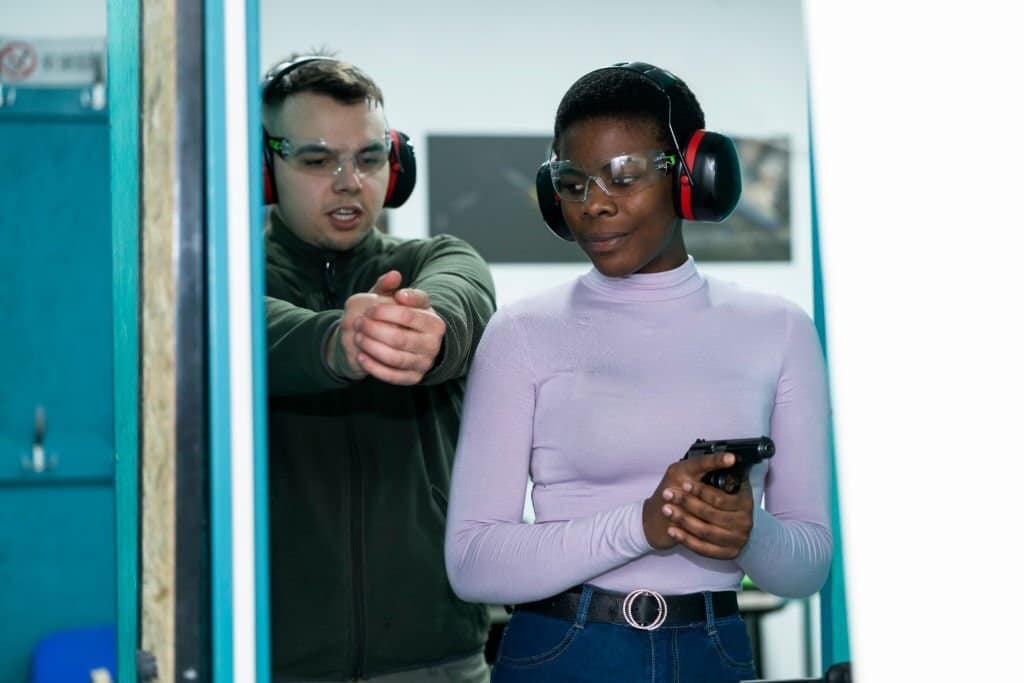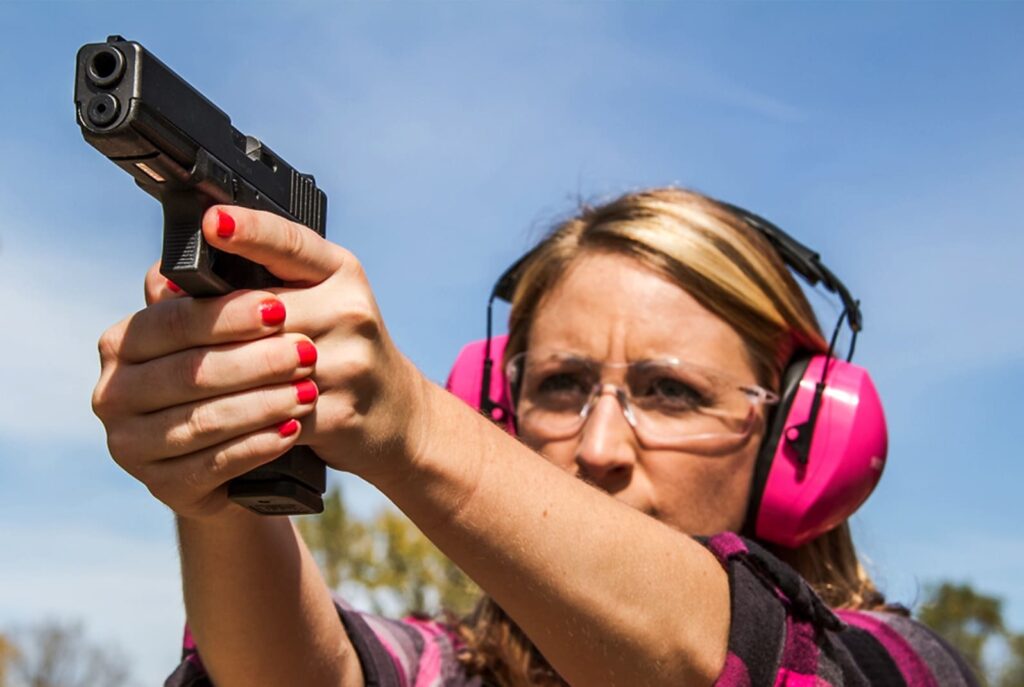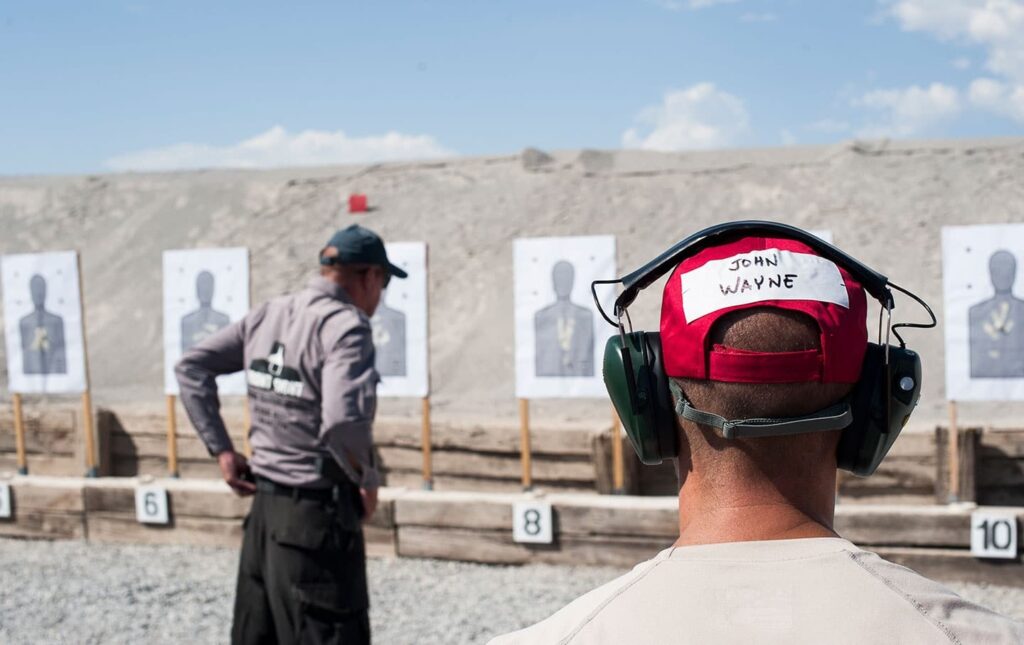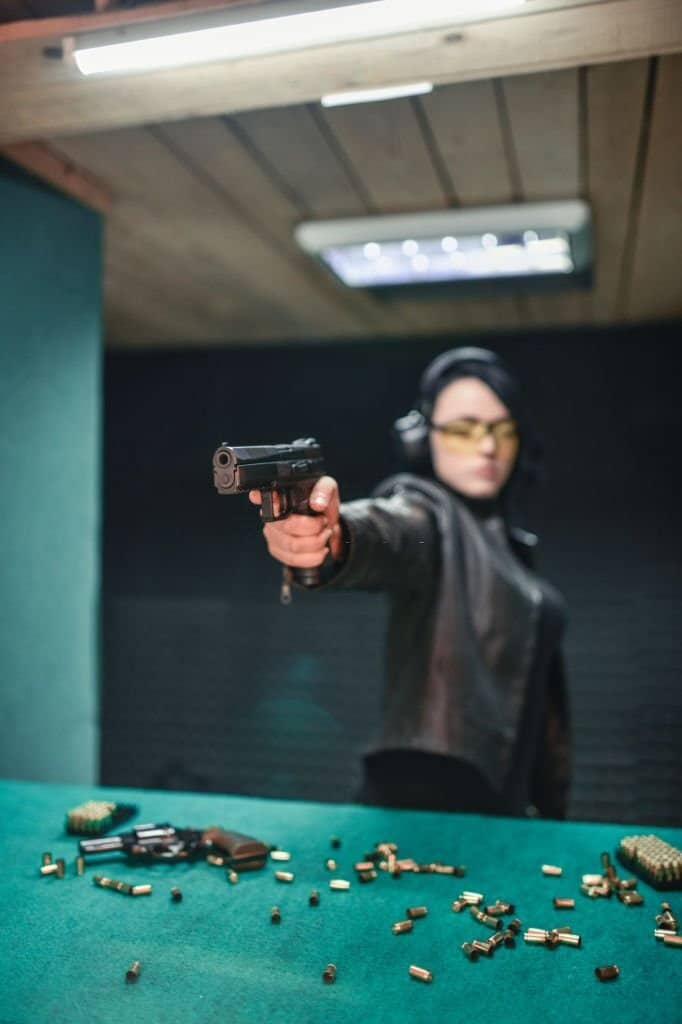How can women conceal their carry as safely and effectively as possible? We are listing the 10 Life-Saving Tips for Women
Important Takeaways
- When selecting a holster, consider your body type.
- Consider carrying your firearm in a purse, but only purses designed for concealed carry should be used.
- Experiment with withdrawing your firearm.
- Make certain that children do not have access to your firearm.
- Assume that a weapon is loaded at all times.
- Maintain awareness of your surroundings and walk confidently.
- Trust your instincts and don’t be concerned with appearing “polite.”
- Ensure that your firearm is loaded and ready to use.
Introduction:
How many times have you stood outside your car, looking for your keys in your bag, oblivious to what was going on around you? How many times have you walked through a dark parking garage or an empty street, completely exposed?
It only takes a split second for someone to approach you, grab you, and forcefully remove you, and you must be prepared for such situations.
Women, in particular, must be armed and ready in the event that they come into contact with a violent offender, and a conceal carry license can be an important part of your self-defense strategy. Women, on the other hand, must take a few extra precautions. This guide offers tips and tricks for women to improve their safety. But, before we get to the tips, it’s important to talk about the conceal carry options available to women.

Concealed carry options for women:
It can be extremely overwhelming for women with all the different options between bags and various holsters. We are here to simplify it.
First, we’ll break things down between two types on body and off body. On body means you wear your firearm on your person and off body that means you carry your handgun and a purse or bag.
Many women opt to choose off body carry as their first experience with carrying a firearm because it doesn’t require a change of wardrobe.
On body and off body conceal carry for women:
 License to Carry: What You Need to Know – Texas LTC Online” class=”wp-image-28651″ width=”487″ height=”326″/>
License to Carry: What You Need to Know – Texas LTC Online” class=”wp-image-28651″ width=”487″ height=”326″/>When you conceal on your body, you have to be very conscious of things like printing. That’s when the outline of your firearm is shown on the shirt that you’re wearing.
But when you carry off body, there’s no need to worry about special pants or belts. No need to figure out what type of holster to get. No need to layer your clothing appropriately and no need to get used to comfortably having a firearm on your body.
Life-Saving Tips for Women Who Carry Concealed
1. When selecting a holster, consider your body type.
Women came in a variety of beautiful shapes and sizes, but their shapes can sometimes present difficulties when deciding how to carry a firearm.
The location of your carry depends on your body type, comfort, and, of course, preferences. There are belt holsters, compression or corset holsters, shoulder holsters, ankle holsters, bra holsters, and even holsters built into clothing. Whatever you decide, be prepared to assess your clothing and layer appropriately so that your handgun is truly concealed.
Women who are slim:
Thin women should consider belly bands for their flexibility or a cross-draw carry that keeps the gun close to their midsection. They might also want to think about thin holsters that don’t add much bulk under their clothing.
Women of average size:
They might want to consider concealment leggings or shorts, which are comfortable and reduce the gun’s print. Carrying cross draw and using bellybands can also work well, and if you’re carrying a.380, you might want to consider a bra holster.
Women of larger stature:
They might want to try a cross-draw, which keeps the gun’s grip just under their breast and away from their bellies. Some prefer a corset holster or a wider belly band that keeps the gun easily accessible while also slimming.
Finally, you may need to try out a few different holsters until you find the right fit for your needs.
2. Carefully consider off-body carries.
If you can’t comfortably carry your firearm on your person, you might want to consider an off-body carry. There are numerous purses available that allow you to carry a firearm while also complementing your outfit.
Purse, and carry, on the other hand, necessitates your undivided attention. That means your purse is not allowed to leave your possession. There will be no dumping your bag in a shopping cart or leaving it hanging on the back of a chair when dining out. You must maintain complete control over your bag at all times.
If you choose this off-body option, make sure to choose a purse that is designed for concealment.
It should have a holster compartment dedicated solely to your firearm, as well as one that completely covers the trigger guard with rigid material, preventing access to the trigger. This makes it easier and faster to find when you need it.
Having a designated compartment and covering the trigger guard prevents items from becoming entangled in the trigger guard. (This is not a good thing.)
Whatever purse you choose, keep in mind not only how you’ll be able to access your firearm, but also how you’ll need to be consistent in the way you carry your bag. So, if you decide to carry off-body, make sure you choose a bag that works best for you and practice with it.
3. Understand Your Handgun and How to Use It Correctly
When you first get your handgun, take the time to learn how it works and how to use it properly. Learn how to clean, load, and unload it safely, and practice these steps until you are comfortable with them. It’s also critical to get firearms training and practice shooting at the range so you know how to stand properly and the proper techniques for holding and firing your gun.
4. Exercise, exercise, exercise
The mere possession of a firearm does not protect you from violent crimes. You must be able to use the gun quickly, skillfully, and accurately, which takes practice. Shoot your gun as much as possible, and think about training for active-shooter and abduction scenarios.
Also, practice taking your gun out of its holster. Keep in mind that if you’re carrying your gun in a purse, you’ll probably need more practice because drawing a gun from a bag is typically more difficult.
5. Make certain that children do not have access to your firearm.
If you’re a mother or someone who regularly cares for children, concealed carry can help you protect yourself as well as the children with you. You must, however, ensure that the gun never becomes a threat to the children.
Whether you carry your firearm on or off your body, make sure curious children cannot find or grab it.
6. Assume that a weapon is loaded at all times.
You may be meticulous about unloading your handgun after each practice session, but humans make mistakes, and it is possible to forget just once and leave your gun loaded. It is best to always assume that a gun is loaded. This can prevent negligent discharges and even save your or another person’s life.
7. Be prepared to draw your firearm if necessary.
Women must be prepared in the event of a threat. In addition to having your firearm readily available, ensure that your hands are free and that you are carrying nothing but your keys. Always be aware of the location of your firearm.
8. Carry yourself with assurance.
Predators prey on victims they believe are vulnerable. Even if you’re having a bad day, make an effort to stand tall and carry yourself confidently. Passers-by should be looked in the eyes. This demonstrates to others that you are strong, confident, and aware of your surroundings. It can also be useful in identifying a perpetrator.
9. Have faith in your instincts.
Your instincts are almost always correct, but women are taught to ignore them throughout their lives. If you enter an elevator and have a bad feeling about the person inside, simply exit and wait for the next one.
You should not be concerned if your actions appear impolite or strange. Your instincts must be respected and honored because they are your first line of defense.
10. Ensure that your firearm is ready to use.
Maintain the cleanliness of your firearm and ensure that it is loaded and ready to use.
Keep hollow point rounds on hand in your handgun. They expand on impact, allowing the target’s internal organs and tissues to be severely impacted and wounded much faster. They are also safer for high-traffic areas because they stop moving forward when they penetrate the target, reducing the risk of over-penetration and damaging whatever is behind the target.
Conclusion:
Choosing a comfortable on-body carry option is one thing you may need to adjust to the idea of having a firearm with you and on you.
Start by carrying your handgun for an hour around your home with a holster or bag you’ve chosen in a safe area of your home. And, while your firearm is unloaded, practice accessing and drawing your pistol. When you feel ready, go on a short outing, such as a short walk or a drive in the car. Extend the time and your confidence as you become more at ease.


